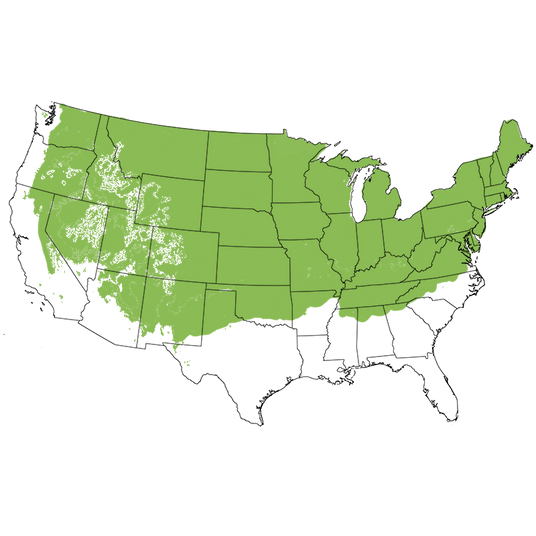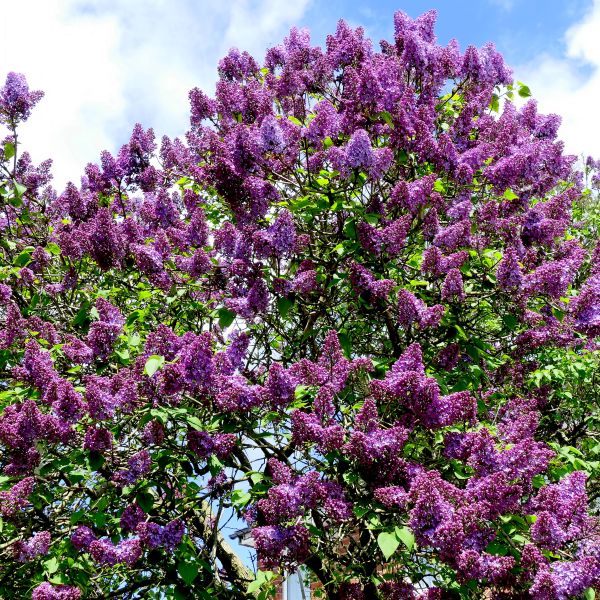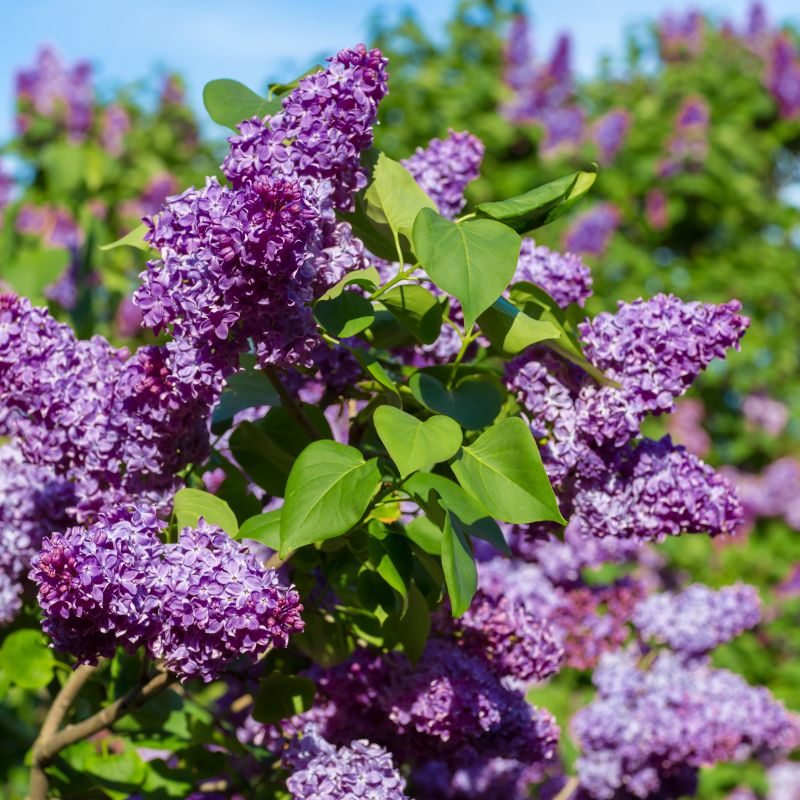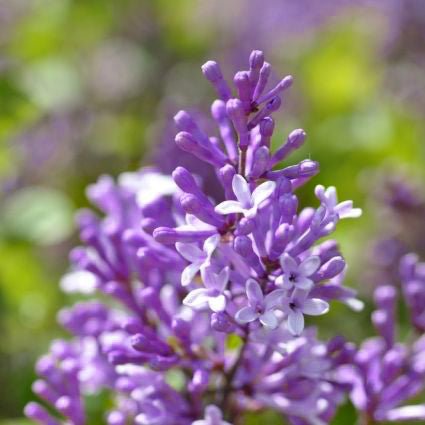Common Purple Lilac
Syringa vulgaris
Plant Sentry™
Plant Sentry™

Plant Sentry™ Protected
Your order is protected by our compliance system that:
- Prevents restricted plants from shipping to your state
- Ensures plants meet your state's agricultural requirements
- Protects gardens from invasive pests and diseases
Delivery and Shipping
Delivery and Shipping
Delivery and Shipping
Fast, Safe Plant Delivery
Ships in 3-4 business days • Tracking provided • Weather protected
| Under $50 | $9.99 |
| $50 - $99.99 | $14.99 |
| $100 - $149.99 | $16.99 |
| $150 - $198.99 | $24.99 |
| $199+ | FREE |
✓ Zone-specific timing • ✓ Professional packaging • ✓ Health guarantee
Understanding Plant Options
Nature Hills offers plants in two main formats:
- Container Plants: Grown in pots with soil, sized by container volume and plant age
- Bare Root Plants: Dormant plants without soil, sized by height measurements
Container Plant Sizes
Container sizes indicate plant age and growing capacity rather than liquid volume equivalents. Our containers follow industry-standard nursery "trade gallon" specifications, which differ from standard liquid gallon measurements.
Young Plants (6 months to 18 months old)
| Container Size | Actual Volume | Metric Equivalent |
|---|---|---|
| 2" x 2" x 3" | 0.18 - 0.21 dry quarts | 0.20 - 0.23 dry liters |
| 4" Container | 0.31 - 0.87 dry quarts | 0.35 - 0.96 dry liters |
| 4.5" Container | 0.65 dry quarts | 0.72 dry liters |
| 6" Container | 1.4 dry quarts | 1.59 dry liters |
| 1 Quart | 1 dry quart | 1.1 dry liters |
| 5.5" Container | 1.89 dry quarts | 2.08 dry liters |
Established Plants (18 months to 2.5 years old)
| Container Size | Actual Volume | Metric Equivalent |
|---|---|---|
| 2 Quart | 2 dry quarts | 2.2 dry liters |
| #1 Container | 2.26 - 3.73 dry quarts | 2.49 - 4.11 dry liters |
| 5" x 5" x 12" | 3.5 - 4.3 dry quarts | 3.85 - 4.74 dry liters |
Mature Plants (2-4 years old)
| Container Size | Actual Volume | Metric Equivalent |
|---|---|---|
| #2 Container | 1.19 - 1.76 dry gallons | 5.24 - 7.75 dry liters |
| #3 Container | 2.15 - 2.76 dry gallons | 8.14 - 12.16 dry liters |
Large Plants (3-5 years old)
| Container Size | Actual Volume | Metric Equivalent |
|---|---|---|
| #5 Container | 2.92 - 4.62 dry gallons | 12.86 - 20.35 dry liters |
| #6 Container | 5.25 - 6.01 dry gallons | 23.12 - 26.42 dry liters |
| #7 Container | 5.98 - 6.53 dry gallons | 26.34 - 28.76 dry liters |
Bare Root Plants
Bare root plants are sold by height from the root system to the top of the plant. Plants may exceed minimum height requirements.
Common Sizes:
- Trees: 1 foot, 2 feet, 3 feet, 4 feet, 5 feet, 6 feet
- Shrubs & Perennials: 1 foot, 18 inches, 2 feet
Important Notes
Container Volume Specifications
- Trade Gallon Standard: Our containers follow industry-standard "trade gallon" specifications established by the American National Standards Institute (ANSI Z60.1) for nursery stock
- Volume Variations: Actual soil volume may vary due to plant root systems and growing medium settlement
- Age Indicators: Container size primarily indicates plant age and maturity rather than liquid volume equivalents
Growing Conditions
- Plant size can vary based on variety and growing conditions
- Container size helps indicate plant maturity and establishment level
- Larger containers generally mean more established root systems and faster landscape establishment
Seasonal Availability
- Bare root plants are available seasonally when dormant
- Container plants are available throughout the growing season
- Specific varieties may have limited availability in certain sizes
Questions?
For questions about specific plant sizes or availability, please contact our plant experts who can help you choose the right size for your landscape needs.

Plant Sentry™ Protected
Your order is protected by our compliance system that:
- Prevents restricted plants from shipping to your state
- Ensures plants meet your state's agricultural requirements
- Protects gardens from invasive pests and diseases
Plant Profile & Growing Essentials
Cold hardy, Flowering, Fragrant, Deer-resistant, Attracts pollinators, Drought resistant, Clay Tolerant, and Hedge/Screen
Specifications
Specifications
-
Botanical Name
-
Height
-
Width
-
Growing Zones
-
Sunlight
-
Growth RateModerate
-
Flower Color
-
Leaf Color
-
Fall Color
-
Pollinator FriendlyYes
-
Pollinator Required
-
FragrantYes
-
Bloom PeriodLate Spring
-
Does Not Ship ToAK, HI, ID, MT, OR
Planting & Care
Planting & Care
The scent of Spring! Nothing beats the captivating scent of fresh Lilac in bloom. Lilac oils have been collected from the flowers and used in perfumes and lotions. Modern companies try to recreate the desirable scent for air fresheners and candles, but they'll never top the real deal. There is something so wonderful about having your very OWN Lilac shrub to welcome spring each year.
Common Purple Lilac (Syringa vulgaris) is one of the best Lilac bushes, and in fact, most other Lilac selections are rooted onto the Common Lilac roots! It was brought from Europe in the 1700s and was bred extensively to come up with many new selections still being grown today.
The delightfully fragrant flowers are large and profuse, and they provide fantastic spring color. They are showy in the landscape and make knockout cut flower arrangements. You'll create happy memories with this plant.
Lovely clusters of lavender flowers grow from the branch tips in mid-spring. They make a wonderful contrast to the dark green, heart-shaped leaves. Cold hardy in USDA hardiness zones 3 through 7, these plants bloom reliably in cold climates.
This large, carefree woody shrub has been a favorite for generations because they are so easy to grow. It is very hardy and can withstand really severe winters down to -40 degrees! Ancient Lilacs have been found growing around old farmsteads that are hundreds of years old.
You'll love it! So will neighborhood butterflies, pollinators, and hummingbirds. They'll be drawn to your yard by the delicious scent and fabulous color!
Planting and Application:
The extreme hardiness of this plant makes it excellent for exposed windy locations in those cold areas. Include Lilacs in windbreaks and shelterbelts for color and fragrance. This is a stunning choice as an accent plant, hedge, or privacy screen in many places around your yard. Try pairing it with other Lilac cultivars to extend the season of bloom. For a colorful hedge, add pink, yellow, Persian, and white Lilacs.
As you know, the real reason everyone wants this is for that amazing fragrance. Don't forget to use one near your bedroom windows or along the garden path. You'll want to enjoy that fragrance when they are blooming! Plant a special specimen Lilac as a focal point near your windows and patio where they can be seen, smelled, and enjoyed. You'll adore the late spring flower power and unbeatable fragrance that Common Purple offers!
Give Common Purple Lilac plenty of room to develop into its full size. This one wants to grow into a wonderful rounded deciduous shrub for you! This wonderful variety will look fantastic as a big, bold untrimmed hedge or screening plant in open sunny locations. Plant them 3-4 feet apart (measuring from the center of one to the center of the next) for a tight hedge.
We recommend buying the largest size we have in stock to get a jump start on your friendly, living Lilac fence. If you have lots of space to cover, you can space them out 4-5 feet. Plant a Common Purple Lilac trained as a tree or native shrub out in the open as a barrier between a roadway or to define your property with a large screen. Closer spacing makes a solid hedge or screen sooner, rather than later.
They are a great plant to use in a natural grouping in open lawn areas. Remember that an odd number of plants is most pleasing to the eye. Try a triangular planting or create a staggered row of 5 or 7 in a zig-zag as a backdrop to a mixed shrub or perennial border. Easily extend the height of an existing hardscape fence with a long row of these durable beauties. Or, use them in place of a new fence. Your neighbors and your pocketbook will thank you!
Start your own Lilac collection by mixing up your plantings with some different colors and sizes of Lilac, or for a specimen accent or the Common White Lilac for color diversity! Mix among other flowering shrubs and ornamental patio trees!
We honestly can't think of a nicer housewarming present. Lilacs make incredibly meaningful memorial plants and can celebrate the birth or adoption of a child.
- Extremely Fragrant Purple Flower Panicles
- Butterfly Magnet Blooms & Reliable Flowering
- Tall & Wide Vigorous Growth
- Very Cold Hardy & Rugged Native Lilac
- Hedge, Cut Flowers, Pollinators, Specimen & Screens
#ProPlantTips for Care:
You won't have to worry about this hardy native plant! For the best results, plant Common Purple Lilac in well-drained soil in a spot where it gets full sun for most of the day. Give your new plants an even schedule of moisture to ensure a successful transplant. Plant your Lilacs where they get full sun for the best bloom. Keep lawn fertilizer away from the roots, as high nitrogen fertilizers can make nice foliage but may not allow for the best flowering.
Just be sure to check that your soil drains well. If you see puddles in your planting site after a rainstorm, you'll want to "mound up" before planting. Simply add more soil in a mound that is 18 - 24 inches higher than your native soil line. Plant directly in that mound. Lilacs won't tolerate wet soils, so give it a great start for the best success.
You can plant most any time from early spring right into late fall. Apply mulch around the base of the shrubs and extend it out at least a few feet. You'll want to give the Lilacs their own mulched bed to thrive in.
If you live in deer country, you'll be pleased to know that this "old-fashioned" Common Purple Lilac is not a preferred food for deer. However, you'll want to spray with Deer Spray when you plant yours, just to remind Bambi that he doesn't like the taste. Follow the directions on the bottle.
Don't miss a single bloom! Follow these easy Pruning steps for the best flowering:
Any light pruning should be done right after the panicle flowers are finished blooming. It is very important to trim as the flowers fade because the new growth that follows makes the Lilac flowers for the next spring. Trimming too late can eliminate flowers for the next year.
You can prune these large shrubs into small, specimen Lilac trees by removing lower limbs and exposing the multi-branched structure of these lovely plants!
Once your Lilac plants have been growing for about 10 years, you'll want to start a regular schedule of renewal pruning and removal of suckers (when needed). After the blooms fade, cut a few of the oldest, thickest branches right down to the ground each year. The younger, thinner branches remain and keep your plant vigorous and healthy.
Renewal pruning is great for your Lilac shrub. Removing the oldest growth lets the new branches take their turn. The youngest branches will produce the best bloom for you the following spring. Prune to keep an open interior to reduce the chances of powdery mildew.
- Full Sun
- Moderate Consistent Moisture
- Loves Mulched Beds & Well-Drained Enriched Soil
- Prune Immediately After Flowering Only
- Not Preferred By Deer
- Easy Care, Cold Hardy & Versatile
Native hardy blooms and alluring fragrance, the lovely lavenders of the Common Purple Lilac bush will add classic beauty and reliability to your landscape! Nature Hills has one of the widest selections of Lilacs available, and we get calls every day from people searching for the classic old-fashioned Lilac … Well this is it!
Frequently Asked Questions
How tall does Common Purple Lilac grow?
The Common Purple Lilac can reach a mature height of 8-10 feet with a similar mature spread.
Is Common Purple Lilac fast-growing? How fast does a Common Purple Lilac grow?
Lilacs generally have a medium growth rate and can obtain about 12-18 inches a year in optimal growing conditions.
What is a Common Purple Lilac?
The Common Purple Lilac is the native Syringa vulgaris shrub that is typically found growing in sunny pastures, roadsides, and fields. These Common Lilacs have the classic strong fragrance the species is known for.
What shipping options do you offer?
NatureHills.com works closely with our growers and nursery professionals to ensure we ship when it is most appropriate for your area. We aim to deliver the hardiest plants by avoiding extreme high and low temperatures. Check out our shipping schedule for more information and to learn our wills and won’ts when it comes to shipping plants. Find your Common Purple Lilac for sale here at NatureHills.com!













